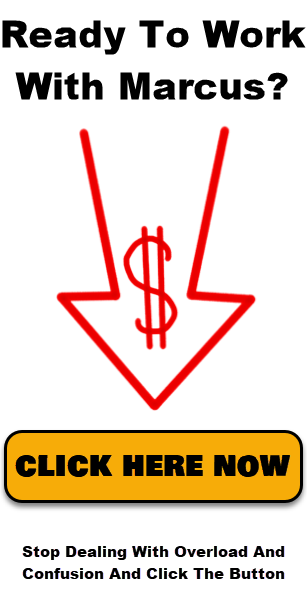Turn Digital Courses into Income with Google Gemini and AI Tools
Discover how to tap into the $1.7BN/day AI ads gold rush using smart tools, strategy, and simple steps to boost your online income.
Hey there! Marcus here. If you’ve been wondering how the heck people are making real money using AI tools like ChatGPT, Google Gemini, and other crazy systems, this is the post you’ve been waiting for. Today, I’m going to pull back the curtain and show you how I made $14,000 in just three hours using AI, some digital tools, and a little thing I like to call strategy.
We’re not just talking theory here. I’m going to walk you through what I did, what’s working now, and how you can jump on this gold rush without needing a massive budget or tech skills. So grab some coffee and get ready. This is going to be good!.
What’s the AI Ads Gold Rush and Why It Matters
Right now, there’s over $1.7 billion per day being spent on online ads. That’s not a typo. Every. Single. Day.
Advertisers, affiliate marketers, course sellers, and SaaS companies are all battling for attention. But here’s the kicker: most of them are just throwing money at traffic and hoping it sticks.
You? You’re going to do things differently.
With tools like Google Gemini, ChatGPT, and Manis AI, you can create your own interactive tools, dashboards, and courses that make you look like a total rockstar, even if you’re just getting started.
The Secret Sauce: Strategy + Tools
So the big shift isn’t just the tech, it’s how we use it. Let me say it louder for the people in the back: It’s not about using the tool. It’s about using the tool to build something people actually want.
In my case, I:
- Took an old PLR course
- Used AI to turn it into an interactive, tool-driven dashboard
- Packaged it with value
- Sent it to my list
Three hours later? Boom $14,000 in sales.
Why Most People Make Nothing Online (and How to Avoid It)
Look, I’ve been doing this for 25 years. I’ve seen it all. And the hard truth is that most people trying to make money online don’t make a dime.
Why? Here’s a quick list:
- They rely on hype instead of real value
- They give up after a few weeks
- They chase tactics instead of strategy
But if you flip the script and follow a strategy first approach that uses AI to create real tools, you’re already ahead of 99% of the crowd.
Let’s Break Down the Process
Step 1: Pick a Niche That’s Already Making Money
I don’t care if it’s nutrition coaches, real estate agents, or dog trainers. The key is to go where the money is.
Use keyword tools to:
- Check search volume
- Find questions people are asking
- Understand the demand
Step 2: Find or Build a Simple Product
This could be:
- A PLR ebook
- A short video series
- A basic checklist or worksheet
Then use AI to spice it up!.
Step 3: Add Interactive Tools
This is where the magic happens. I built:
- A domain name helper for coaches
- A pricing calculator
- A social media post planner
- A lead gen site builder
All using Gemini + ChatGPT.
These tools aren’t just fancy. They actually help people take action.
Step 4: Bundle It All Together
I call this the AI Dashboard Method. You’re not just selling an ebook—you’re giving people a working toolkit they can USE.
Step 5: Launch and Promote
Here’s the good part:
- You can launch to a list (like I did)
- Or put it on Gumroad/Udemy for exposure
- Or run low-cost ads
With the tools and value built in, people will actually WANT to buy.
How You Can Start From Scratch
Don’t have a list or product? Here’s how to start today:
- Choose a profitable niche using keyword tools (health, money, and biz are always good bets)
- Find PLR products or write a few short guides using ChatGPT
- Use Gemini to turn them into tools (like calculators, generators, planners)
- Host it on your own domain (shared hosting is cheap—around $6/mo)
- Create a lead magnet or $7 front end offer
Then scale from there.
Final Tips and Warnings
- Don’t skip strategy. Tools are awesome, but they need direction.
- Host on your own platform. Don’t build your castle on rented land.
- Keep it simple. Fancy doesn’t mean better, functionality wins every time.
- Be helpful. The more your tools solve real problems, the more people will buy.
The AI Ads Gold Rush is real. $1.7 billion per day real. And if you’re not in the game, you’re leaving a fortune on the table.
By combining AI-powered tools with smart strategy, you can create real value, help real people, and make real money online.
So stop watching from the sidelines. Build something. Launch it. Test it. Refine it. This is how businesses are built.
👇 If you’re serious about learning how to build your own AI-powered business from scratch, check out my full Simple Sites course. It’s loaded with step by step training, weekly calls, and yes, even the tools.
Go to SimpleSitesBigProfits.com to get started now.
| Platform | Plan Name | Monthly Price | Annual Price | Key Features |
|---|---|---|---|---|
| ClickFunnels | Pro | $297/month | $2,970/year | 10 workspaces, unlimited funnels, courses, members, contacts, pages, domains. |
| Skool | Single Plan | $99/month | $999/year | 1 group per plan, unlimited courses and members, all features included. |
| Teachable | Business | $665/month | $5,988/year | Unlimited courses, students, and coaching products; 20 admin users; 0% transaction fees. |
| Kajabi | Pro | $399/month | $3,828/year | 3 websites, 100 products, 100 funnels, 100,000 contacts, 2 million emails/month. |
| Thinkific | Premier | $499/month | $4,788/year | Unlimited courses and students, advanced analytics, single sign-on (SSO), API access. |
1. Assess and Break Down the Original Content
-
Skim the material (course/ebook/PLR) for key frameworks, formulas, checklists, or action steps.
-
Identify actionable elements—calculators, templates, worksheets, checklists, scripts, trackers, etc.
-
Note where personalization or automation could enhance results (AI suggestions, data entry, progress tracking).
2. Map Content to Tools/Features
-
List out features you can build from the material. (e.g., goal setting → goal tracker, chapter on budgeting → budget calculator, scripts → AI prompt generator)
-
Ask: What would help the user take action or save time?
-
Brainstorm any features that could use generative AI (chat, content, summaries, suggestions).
3. Design the Dashboard Layout
-
Sketch a simple layout: tabs/sections for each tool or content module.
-
Consider a “Start Here” onboarding flow.
-
Visual elements: progress bars, checklists, calculators, chatbots, and resource libraries.
4. Turn Static Content into Interactive Elements
-
Checklists → Clickable, savable checklists
-
Templates → Editable, downloadable templates
-
Formulas/Frameworks → Calculators, scorecards, or wizards
-
Guides/Chapters → Step-by-step workflows or quizzes
-
FAQs → Interactive knowledgebase or AI Q&A
-
Scripts → AI script generators
5. Integrate AI Where It Adds Value
-
Use AI for personalization (custom recommendations, plan builder).
-
Add AI chat to answer questions or provide real-time feedback.
-
Let AI summarize, reword, or create new content based on user input.
-
Use AI for scoring, analysis, or automated reports.
6. Choose the Tech Stack
-
No-code tools: gemini / chagpt / manus
-
Embed AI: OpenAI/ChatGPT API, Claude, or other LLMs.
-
Free Freemium Or Paid
7. Build and Test MVP
-
Start with core interactive features first.
-
Get real user feedback.
-
Tweak the dashboard layout and features based on engagement.
8. Monetize and Launch
-
Lead magnet: Free access to basic tools; upsell premium.
-
Membership: Paid access, recurring SaaS.
-
Bundled with PLR/ebook/course as a high-ticket upgrade or bonus.
9. Add Support and Community
-
AI or human chat for support.
-
Discussion area or forum.
-
Regular updates (content drops, new tools).






One Response to Turn Digital Courses into Income with Google Gemini and AI Tools